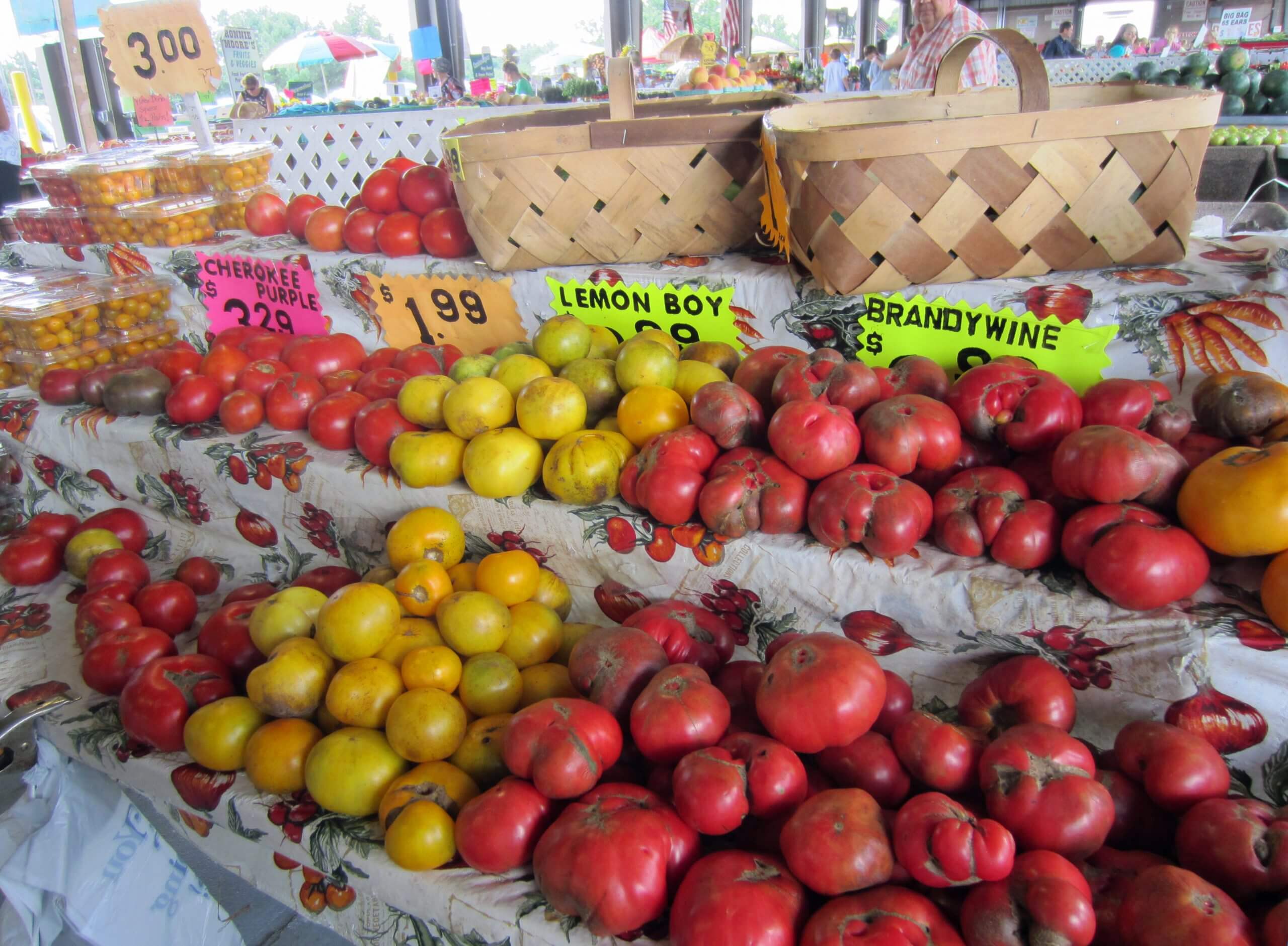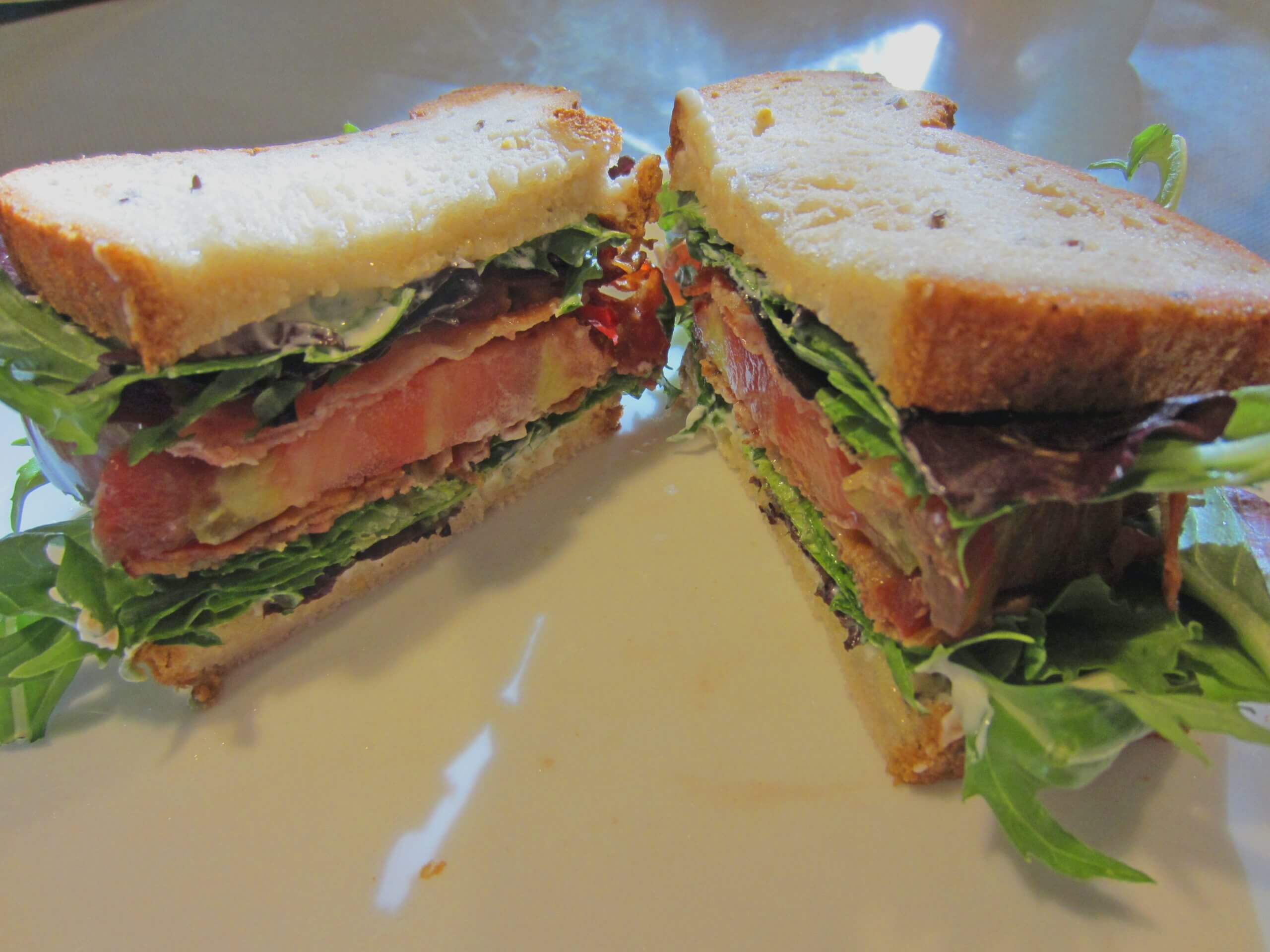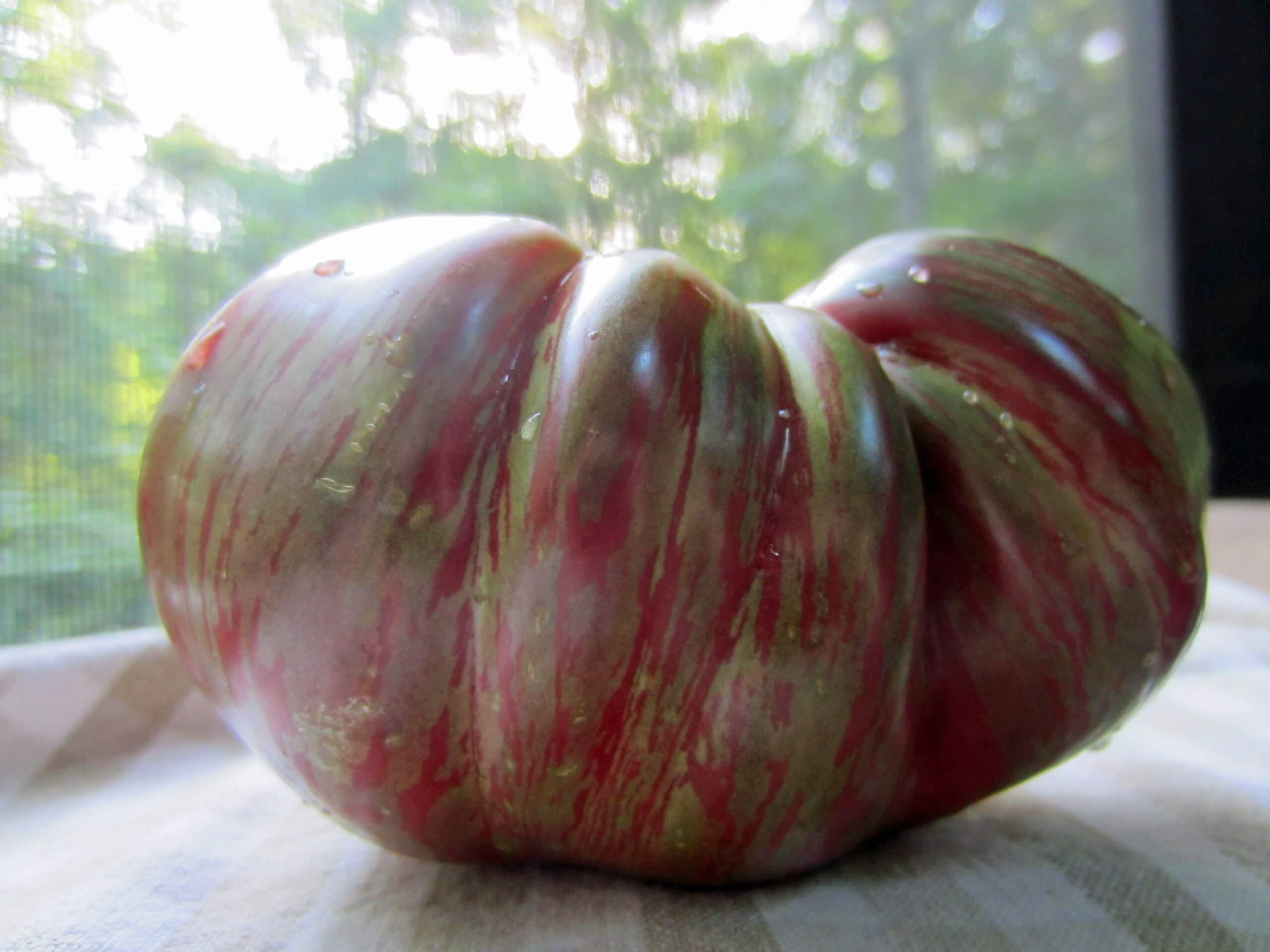
I hated tomatoes as a child. You couldn’t get me to eat one, even with sugar sprinkled on it. The only tomato-based products that passed my lips were ketchup on a hamburger or watery spaghetti sauce. Then I married a wise man who insisted that our first home wouldn’t be complete unless there was a vegetable garden in the back yard with tomatoes. I had to agree with him that a homegrown beefsteak tomato was pretty good on a BLT and that tiny cherry tomatoes fresh from the garden did add a special je ne sais quoi to a salad. But still, I was confused. Why was this plain vegetable/fruit so prized by so many?

Then, in the mid-1990’s, I met Craig LeHoullier, a man who speaks about tomatoes the same way a connoisseur describes vintage wines, fine antiques or classical music. His tomatoes are heirlooms. They have names, family histories, and, most importantly, incredible flavor.
LeHoullier is a retired chemist living in Raleigh, North Carolina, where he sells old varieties of tomatoes, hybridizes his own, writes about tomatoes (see The American Gardener Magazine, March/April 2013, A Spectrum of Heirloom Tomatoes), and frequently lectures about them. He is considered one of the country’s heirloom tomato experts, writing under the name NCTomatoman.
Years ago, I asked LeHoullier why he invests so much of his free time growing heirloom tomatoes. He passionately explained, “These tomatoes cannot be commercialized. Their skins are thin, and they are too juicy to be shipped. They must be grown in home gardens. We can’t let these genes disappear.”
“What are your favorite tomatoes?” I followed, not knowing that he had grown over a thousand varieties. LeHoullier quickly began listing the attributes of this oxheart or that potato-leafed variety, including where he first got the seeds and the details of his own growing experiences. I marveled that he could remember all his tomatoes like they were his children. LeHoullier modestly confessed to having a photographic memory.
Since most of us don’t have this gift, here is a short list of six of his all-time favorites:
- ‘Anna Russian’: A large-fruited, pink, heart-shaped tomato that’s early to bear, this variety has excellent flavor, lots of seeds and dates back to around the turn of the twentieth century. LeHoullier initially received his seeds from Brenda Hilenius of Oregon, who received hers as a family hand-me-down. According to family legend, these seeds were shared by a Russian immigrant.
- ‘Cherokee Purple’: Characterized by a most unusual color, this purple-skinned, red-fleshed, green gel-filled beauty is sweet tasting, like a tomato fruit should be. The pass-along plant came to LeHoullier in 1990 by way of J.D. Green of Sevierville, Tennessee, who told LeHoullier that a local Cherokee tribe shared it with his neighbors a century ago. LeHoullier named it, promoted it, and now ‘Cherokee Purple’ is a familiar favorite at local farmer’s markets.
- ‘Mortgage Lifter’: LeHoullier describes this variety as “fantastic.” It is a large, flattish, pink tomato weighing up to three pounds. The story goes that it was the result of hybridizing by “Radiator Charlie” Byles of West Virginia around 1920. By selling his disease-resistant creation, Byles was able to pay off the mortgage to his property, hence the name’s origin.
- ‘Hugh’s’: A late-season, 2-3 pound, lemon yellow tomato from Archie Hook of Indiana, ‘Hugh’s’ is another sweet variety that disproves the myth that yellow tomatoes are bland. Delicious and prolific, it is a favorite among gardeners who save seed.
- ‘Ruby Gold’: A large bicolored beefsteak with yellow fruit marbled in red, ‘Ruby Gold’ is LeHoullier’s favorite sweet slicer for cheeseburgers.
- ‘Brandywine’: LeHoullier explained that he had to grow three batches of tomatoes that were called ‘Brandywine’ before he found the real thing. The correct variant was worth the search. It has large red fruit and usually matures mid-season. The true ‘Brandywine’ is the tomato that others are often judged against for both flavor and hardiness.

To Craig LeHoullier’s list I must add a remarkable tomato recently passed along to me by Gerald Adams, Grounds Supervisor of the North Carolina Executive Mansion, and another tomato fancier extraordinaire. Gerald’s pick is ‘Pink Berkeley Tie Dye’ (from California, of course), an unusual pinkish purplish fruit covered with almost chartreuse-colored stripes, and though it sometimes gets cat-faced, it definitely challenges ‘Cherokee Purple’ for sweetness. The one that Adams gave to me created one of the best BLT sandwiches I have enjoyed in a long time.
Gardeners often ask whether heirloom tomatoes are easier to grow, more prolific, hardier, or more disease-resistant than newly introduced varieties. The honest answer is, “not necessarily.” It really depends on the tomato, but all will grow better in well-amended garden soil and are ‘heavy eaters’ requiring applications of a quality fertilizer like a quality Tomato & Vegetable fertilizer, which is OMRI Listed for organic gardening. Provide full sun, adequate and even watering, and a cooling mulch at the base, such as Black Gold Garden Compost Blend, and plants should thrive. Plenty of elbow room between plants will also promote good air circulation for good health. Follow these simple tomato growing guidelines and your garden will be bursting with fabulous heirloom tomatoes.

